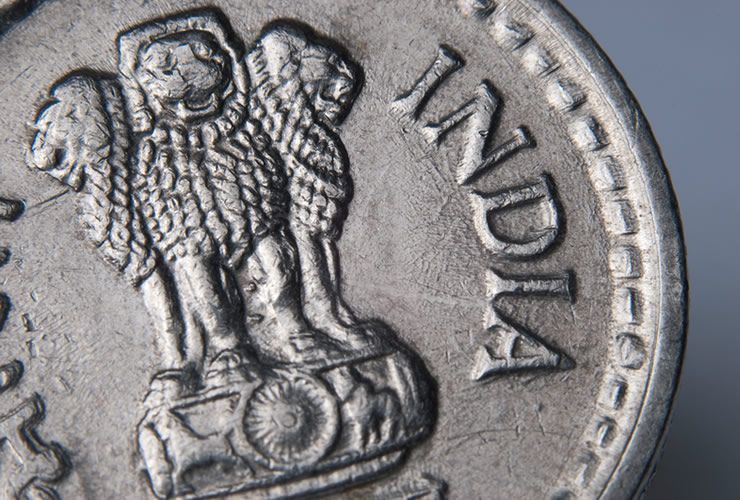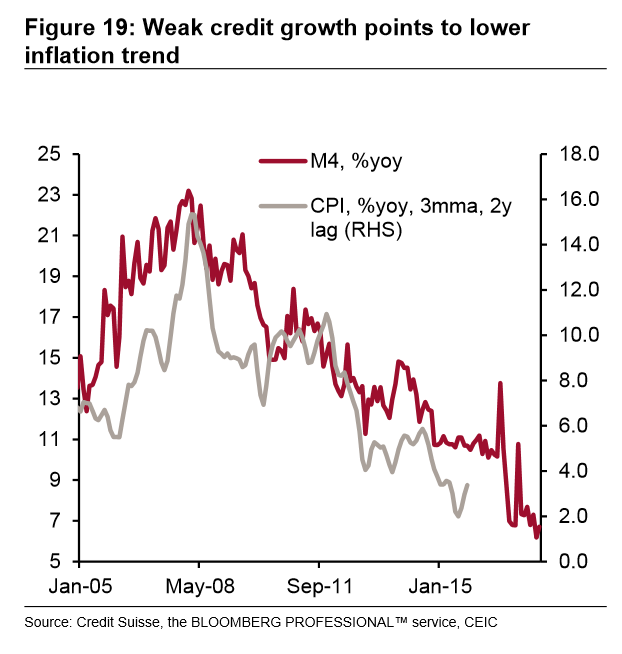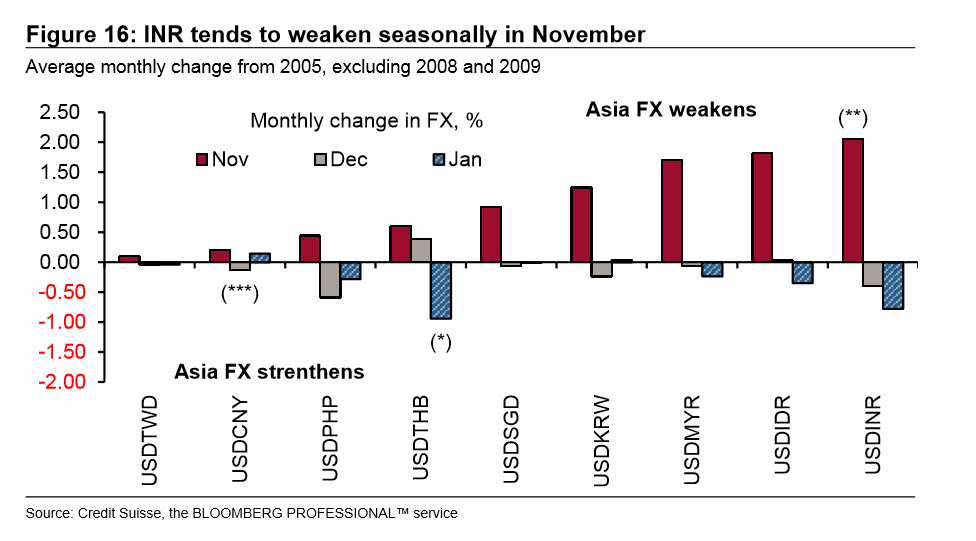Rupee to Roll-Over, Says Swiss Bank

The Indian Rupee is vulnerable to a sell-off due to a combination of complex factors weighing on the medium-term outlook, says Credit Suisse.
The bank's view is based on a combination of factors including a slowdown in growth, the negative impact of the rise in oil prices on India's balance of trade, and temporary rising inflation - usually the last factor would be considered positive for a currency, but not when combined with the other two, and not when it is only temporary.
"Amongst Asia FX, we continue to see the INR as particularly vulnerable in this environment given its sensitivity to oil prices and emerging risk to inflation. We have pared back our bullish outlook on INR, and see the risk of a near-term correction," says Credit Suisse Strategist Ray Farris.
India has to import most of its oil so rising oil prices tend to be negative for the Rupee as it has to be sold in greater quantities in order to pay for the more expensive imports of 'black gold'.
The higher cost of oil will feed through into the wider economy pushing up inflation which is already rising at a faster 3.6% (year-on-year) pace than the 3.4% expected, and Farris sees a continuation to a possible upper bound of perhaps 4.0%.
Higher base inflation will make India vulnerable to an inflation "shock" because of the extreme volatility in Indian food prices.
Normally inflation supports currencies because it leads to central banks raising interest rates, and higher interest rates attract more inflows of foreign capital searching for a higher returns, however, this is not likely to be the case for the Reserve Bank of India (RBI).
Weak growth will prevent the RBI from raising interest rates due to fears it could dampen the economy by making borrowing more expensive and encourage saving over consuming.
At its policy review meeting on October 4 the RBI lowered its growth forecast for 2017 to 6.7%.
Another reason for not expecting high inflation to push up interest rates, is that the inflation bump will probably be short-lived, and then inflation will start falling - increasing the possibility that the RBI will, in fact, have to lower interest rates to stimulate growth, rather than raise them to combat inflation.
Some analysts even expect the RBI to dismiss the current rise in inflation and cut interest rates as early as their December meeting to help spur a stronger economic recovery.
"We continue to expect the RBI MPC (monetary policy committee) to cut (rate) on December 6, to signal a bank lending rate cut, before the 'busy' October-March industrial season intensifies, to support recovery," says BofA Merrill Lynch in a research note.
Such a cut, if it materialises would severely impact on the strength of the Rupee.
Farris sees the bump to inflation as only being short-lived anyway before other factors push prices down again.
Core inflation is at risk of declining, for example, as a result of weak lending.

Inflation is also likely to fall due to the government's recent decision to cut the level of the Indian version of VAT, called GST - which is a general goods sales tax.
Other headwinds also face the Rupee - November is the worst month for the currency on a seasonal basis as amply illustrated in the infographic below:

Overall, based on the evidence, Credit Suisse has decided to raise its forecast for the US Dollar-to-Indian Rupee exchange rate to 65.00 in 3 months and 63.50 in 12 months from a previous forecast of 63.00 and 62.00 respectively, to reflect the expected weakness in INR.
Get up to 5% more foreign exchange by using a specialist provider by getting closer to the real market rate and avoid the gaping spreads charged by your bank for international payments. Learn more here.
